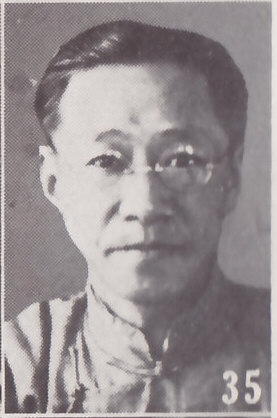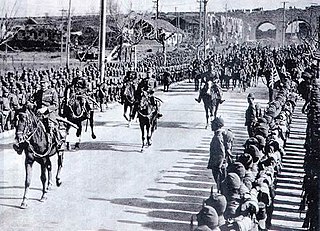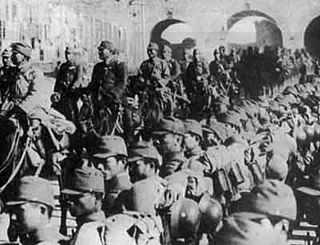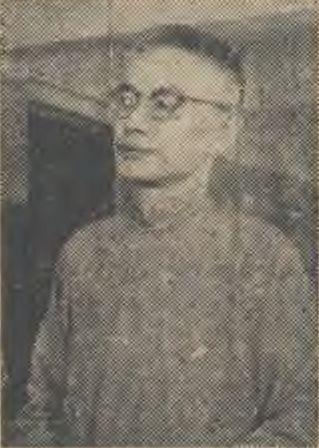
The Battle of Nanking was fought in early December 1937 during the Second Sino-Japanese War between the Chinese National Revolutionary Army and the Imperial Japanese Army for control of Nanjing (Nanking), the capital of the Republic of China.
The Treaty of Peace and Friendship between Japan and the People's Republic of China is a peace treaty concluded between the People's Republic of China and Japan on August 12, 1978. The treaty was signed in Beijing by Huang Hua, Foreign Minister of the People's Republic of China, and Sunao Sonoda, Minister for Foreign Affairs of Japan. The treaty went into effect on October 23, 1978 with the state visit of Vice Premier of the PRC Deng Xiaoping to Japan. The treaty had its origin in the Joint Communiqué of the Government of Japan and the Government of the People's Republic of China of 1972. Negotiations on a formal peace treaty began in 1974, but were drawn out over various disputes until 1978. The treaty ultimately consisted of five articles, and was strongly opposed by the Soviet Union.

The China Expeditionary Army was a general army of the Imperial Japanese Army from 1939 to 1945.

Takeo Itō was a war criminal in the Imperial Japanese Army during World War II.
Central China Expeditionary Army was a field army of the Imperial Japanese Army during the Second Sino-Japanese War.

Weng Wenhao was a Chinese geologist and politician. He was one of the earliest modern Chinese geologists, and is regarded as the founder of modern Chinese geology and the father of modern Chinese oil industry. From May to November 1948, Weng served as President of the Executive Yuan (Premier) of the Republic of China.

The Central China Area Army was an area army of the Imperial Japanese Army during the Second Sino-Japanese War.

The Shanghai Expeditionary Army was a corps-level ad hoc Japanese army in the Second Sino-Japanese War.
The Zhejiang-Jiangxi campaign was a military campaign fought from May to September 1942 as part of the Second Sino-Japanese War. This article in as order of battle, listing the present Chinese and Japanese military forces.

During the Second Sino-Japanese war, the invading Japanese established a variety of puppet governments such as the Provisional Government of China and the Reformed Government of China which used the flag of Five Races Under One Union even though the legitimate Chinese Government had switched to the current day modern flag of the Republic of China.

Zhijiang Dong Autonomous County, usually referred to as Zhijiang County is an autonomous county of the Dong people in Hunan Province, China. It is under the administration of Huaihua prefecture-level city.

Wu Songgao was a politician, jurist and political scientist in the Republic of China. He was an important politician during the Wang Jingwei regime. He was born in Wuxian, Jiangsu.

Zhou Xuechang – November 27, 1952) was a politician in the Republic of China. He was an important figure during the Reorganized National Government of China. His courtesy name was Zhihou (芝侯).
Tokushi Kasahara is a Japanese historian. He is a professor emeritus at Tsuru University and his area of expertise is modern Chinese history.
Akira Fujiwara was a Japanese historian. His academic speciality was modern Japanese history and he was a professor emeritus at Hitotsubashi University. In 1980 he became a member of the Science Council of Japan and was a former chairman of the Historical Science Society of Japan.

The North China Buffer State Strategy is the general term for a series of political manoeuvrings Japan undertook in the five provinces of northern China, Hebei, Chahar, Suiyuan, Shanxi, and Shandong. It was an operation to detach all of northern China from the power of the Nationalist Government and put it under Japanese control or influence.

Zu Feng is a Chinese actor and director. Zu first attracted attention in 2008 for his role as Li Ya in the successful TV drama Lurk. He has earned and been nominated for numerous awards during his career, including winning the Best New Actor Award at the 2011 Chinese Young Generation Film Forum for his role in The Founding of a Party, Society Awardat the Golden Phoenix Awards, and two Huading Award for Best Supporting Actor.
The Sino-Japanese Joint Defence Agreement was a series of secret military unequal treaties between the Republic of China and the Empire of Japan, signed in May 1918. Drawn up following China's entry into the First World War on the part of the Allied Powers, the agreements, which were concluded in secrecy, granted Japan numerous military privileges within Chinese territory along the Sino-Russian border. The content of agreements were leaked to the press at an early stage, sparking a widespread protest movement by Chinese students in Japan and across China. The agreements were officially terminated in January 1921, their continuance made untenable by Chinese public opinion.

The Japanese surrender ceremony that ended World War II in China occurred in Nanjing on 9 September 1945. The forces of the Imperial Japanese Army agreed with the Allies terms to cease all armed conflict. The ceremony occurred a week after the war had officially ended in Asia on September 2.
The Konoe statements refer to three diplomatic statements made by Fumimaro Konoe's cabinets in the early stages of the Second Sino-Japan war, aimed at establishing a new order in East Asia together with China. The Japanese archives during the period of the invasion of China explicitly record and categorise these three Konoe's declarations:













